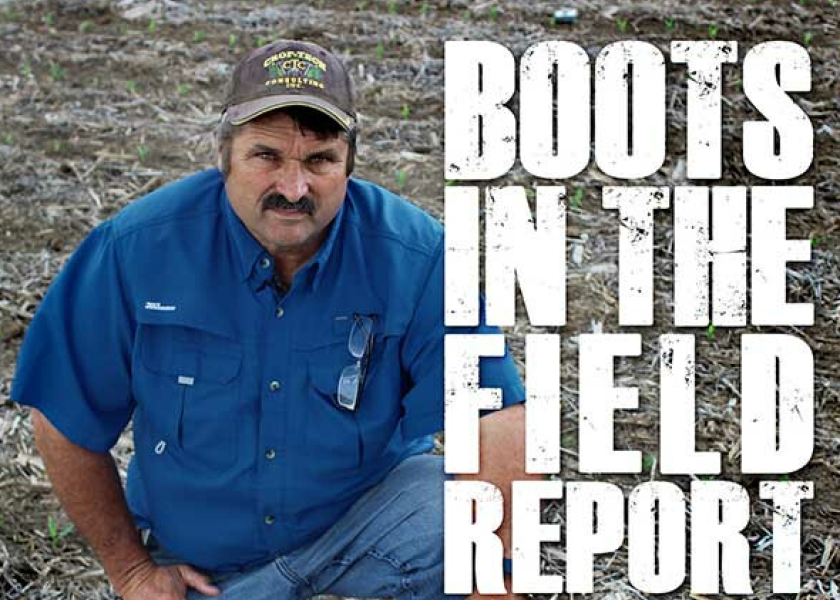Ferrie: Planting dates, N use and Disease Management set Corn Yield Highs and Lows this Season

A little more of this or a little less of that often makes the difference between a ho-hum corn production season and a bin buster. That was true for the 2021 season in Illinois, says Ken Ferrie, Farm Journal Field Agronomist.
In this week’s Boots In The Field report, Ferrie discusses the impact of three key ingredients for this season: planting date/ear count, nitrogen (N) use and and disease management. Weighing in with additional perspective is Matt Duesterhaus, a Crop-Tech Consulting regional agronomist.
“If guys didn’t hit all three of those things just right, they had limiting factors that kept their crop this year to around average,” Duesterhaus says. “But those guys who planted on time, had good ear counts out there in the fall, managed their nitrogen and controlled disease with fungicide, they’re tapping out at the upper end of the spectrum in the 240- to 270-bushel per acre range.”
Here are a few specifics Ferrie and Duesterhaus highlight in the podcast:
Planting date/ear count – Farmers in some parts of the state struggled to get into the field and plant, because of high moisture levels. Rains also posed a legitimate threat of replanting for those growers who did get in the field early, not to mention compaction issues.
Nitrogen use – Adequate N is always a big deal for a corn crop. Corn that had nitrogen readily available on an as-needed basis performed better than crops that didn’t.
“How and when farmers applied N made a big difference,” Duesterhaus says. “Where corn got an application with a Y-drop or sidedress pass, we picked up an additional 10 bushels per acre.”
He adds that keeping enough N available late-season so the corn crop had it for grain fill was more important to yield this year than it was keeping the crop green on the front end.
Still, Duesterhaus stresses the importance of timing of availability. “Overall, the best treatment we saw in our plots was splitting N up between fall, having it on the planter and then in a Y-drop—that three-way split,” he says.
This has real implications for corn growers who plan to apply the bulk or all of their N for 2022 in a fall application of anhydrous, Ferrie says. While concerns about nitrogen availability and prices must be addresses, he encourages farmers to stay in close contact with retailers on product so they can make the most-informed decision.
“There are risks that have to be evaluated, especially for those growers who don’t usually apply anhydrous,” he says.
Disease management – Many Illinois farmers saw unprecedented levels of disease pressure in fields this season.
Corn that would have typically been filling kernels late-season, instead, prematurely shut down due to a cocktail mix of heavy disease pressure coming at it from many fronts – gray leaf spot, northern leaf blight, common and southern rust, tar spot, Goss’s bacterial wilt and leaf blight.
“Some of these fields should have been sprayed twice, especially those fields that got sprayed early,” Ferrie says. “How much loss we have will be tied to where ear development was when the plant started to shut down.”
Ferrie adds that he believes tar spot is “here to stay” in Illinois. For that reason, he encourages farmers to actively look for those hybrids that seemed to hold up best against tar spot this year. Likewise, take note of those hybrids that did poorly. Make plans to discuss both the good and the bad with your seedsman this fall.
Hear the complete podcast here:
Farming In The Sustainable Triangle
Ferrie: 3 Corn Harvest Takeaways to Consider when Planning for 2022







